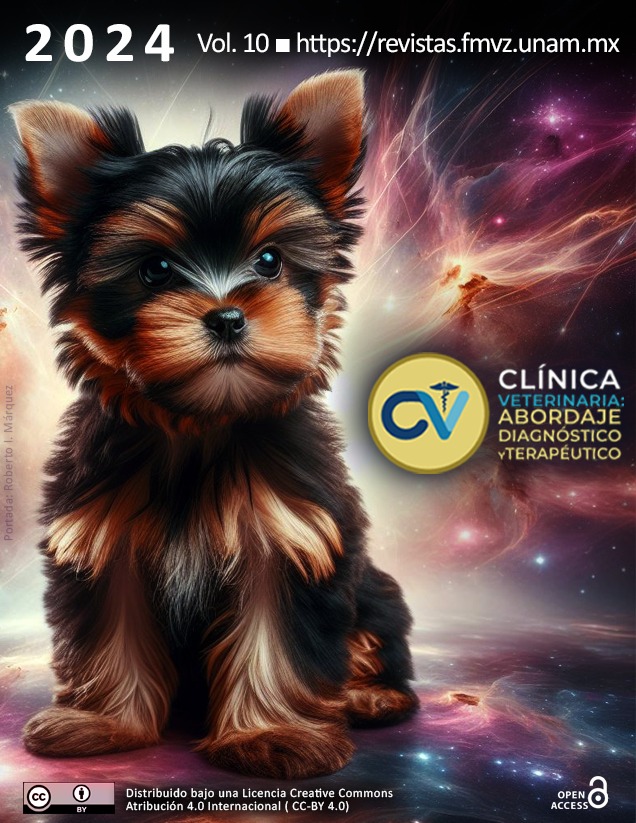Resumen
Los poxvirus son un grupo muy extenso, con adn bicatenario y una envoltura lipídica doble, que infectan a un amplio grupo de animales vertebrados e insectos. Su incidencia y prevalencia en humanos y animales es alta, causa importantes patologías y pérdidas económicas. Únicamente se han identificado cuatro virus considerados patógenos en humanos: viruela (Variola virus), viruela vacuna (Cowpox virus), virus vacuna (Vaccinia virus) y viruela símica (Monkeypox virus). Los tres últimos emergieron después de la erradicación
de la viruela y representan amenazas zoonóticas y enzoóticas facilitadas por las interacciones estrechas con el humano, debido al crecimiento de las poblaciones humanas, los cambios en el uso de suelo y la fragmentación de hábitats; así como cambios climáticos, aumento de los viajes intercontinentales, importación de animales de compañía (mascotas), producción
pecuaria o para estudios de laboratorio y aumento de redes comerciales. A raíz del brote reciente a principios de 2022 y años anteriores, surge la necesidad de evaluar la capacidad de infección de estos poxvirus para comprender, prevenir y establecer tratamientos dirigidos tanto para la salud humana como para la salud animal.
Referencias
Molteni C, Forni D, Cagliani R, Bravo IG, Sironi M. Evolution and diversity of nucleotide and dinucleotide composition in poxviruses. J Gen Virol. 2023;104(10). doi: 10.1099/jgv.0.001897.
MacNeill AL. Comparative pathology of zoonotic orthopoxviruses. Pathogens. 2022;11(8). doi: 10.3390/pathogens11080892.
McInnes CJ, Damon IK, Smith GL, McFadden G, Isaacs SN, Roper RL, Evans DH, Damaso CR, Carulei O, Wise LM, Lefkowitz EJ. ICTV virus taxonomy profile: Poxviridae 2023. J Gen Virol. 2023;104(5). doi: 10.1099/jgv.0.001849.
Barrett JW, McFadden G. Chapter 19 - Origin and evolution of poxviruses. In: E Domingo, CR Parrish, JJ Holland, editors. Origin and evolution of viruses. 2a ed. London: Academic Press; 2008. pp. 431-446. doi: 10.1016/B978-0-12-374153-0.00019-9.
Tesgera T, Huaijie J, Chen G, Xiang F, He X, Wang X, Zhizhong J. Methodical review on poxvirus replication, genes responsible for the development of infection and host immune response against the disease. Archives of Microbiology & Immunology. 2019;03. doi: 10.26502/ami.93650024.
Babkin IV, Babkina IN. The origin of the variola virus. Viruses. 2015;7(3):1100–1112. doi: 10.3390/v7031100.
Farahat RA, Abdelaal A, Shah J, Ghozy S, Sah R, Bonilla-Aldana DK, Rodriguez-Morales AJ, McHugh TD, Leblebicioglu H. Monkeypox outbreaks during COVID-19 pandemic: are we looking at an independent phenomenon or an overlapping pandemic? Annals of Clinical Microbiology and Antimicrobials. 2022;21(1):26. doi: 10.1186/s12941-022-00518-2.
Silva NIO, de Oliveira JS, Kroon EG, Trindade GS, Drumond BP. Here, there, and everywhere: the wide host range and geographic distribution of zoonotic Orthopoxviruses. Viruses. 2020;13(1). doi: 10.3390/v13010043.
Lai CC, Hsu CK, Yen MY, Lee PI, Ko WC, Hsueh PR. Monkeypox: an emerging global threat during the covid-19 pandemic. Journal of Microbiology, Immunology and Infection. 2022;55(5):787–794. doi: 10.1016/j.jmii.2022.07.004.
Isidro J, Borges V, Pinto M, Sobral D, Santos JD, Nunes A, Mixão V, Ferreira R, Santos D, Duarte S, Vieira L, Borrego MJ, Núncio S, de Carvalho IL, Pelerito A, Cordeiro R, Gomes JP. Phylogenomic characterization and signs of microevolution in the 2022 multi-country outbreak of monkeypox virus. Nature Medicine. 2022;28(8):1569–1572. doi: 10.1038/s41591-022-01907-y.
Perez Duque M, Ribeiro S, Martins JV, Casaca P, Leite PP, Tavares M, Mansinho K, Duque LM, Fernandes C, Cordeiro R, Borrego MJ, Pelerito A, de Carvalho IL, Núncio S, Manageiro V, Minetti C, Machado J, Haussig JM, Croci R, Spiteri G, Casal AS, Mendes D, Souto T, Pocinho S, Fernandes T, Firme A, Vasconcelos P, Freitas G. Ongoing Monkeypox virus outbreak, Portugal, 29 April to 23 May 2022. Euro Surveill. 2022;27(22). doi: 10.2807/1560-7917.ES.2022.27.22.2200424.
Freitas TRP. Swinepox virus. Diseases of Swine. 2019:709–714. doi: 10.1002/9781119350927.ch42.
Kaiser FK, Wiedemann A, Kühl B, Menke L, Beineke A, Baumgärtner W, Wohlsein P, Rigbers K, Becher P, Peters M, Osterhaus ADME, Ludlow M. Swinepox virus strains isolated from domestic pigs and wild boar in germany display altered coding capacity in the terminal genome region encoding for species-specific genes. Viruses. 2021;13(10). doi: 10.3390/v13102038.
Sarker S, Isberg SR, Moran JL, Araujo RD, Elliott N, Melville L, Beddoe T, Helbig KJ. Crocodilepox virus evolutionary genomics supports observed poxvirus infection dynamics on saltwater crocodile (Crocodylus porosus). Viruses. 2019;11(12). doi: 10.3390/v11121116.
Armién AG, Wolf TM, Mor SK, Ng TFF, Bracht AJ, Goyal SM, Rasmussen JM. Molecular and biological characterization of a cervidpoxvirus isolated from moose with necrotizing dermatitis. Veterinary Pathology. 2020;57(2):296–310. doi: 10.1177/0300985819891240.
Ojha H, Panwar HS, Gorham RD, Morikis D, Sahu A. Viral regulators of complement activation: structure, function and evolution. Molecular Immunology. 2014;61(2):89–99. doi: 10.1016/j.molimm.2014.06.004.
McFadden G. Poxvirus tropism. Nature Reviews Microbiology. 2005;3(3):201–213. doi: 10.1038/nrmicro1099.
Flores EB, Bartee MY, Bartee E. Reduced cellular binding affinity has profoundly different impacts on the spread of distinct poxviruses. PloS One. 2020;15(4):e0231977. doi: 10.1371/journal.pone.0231977.
Bauer S, Zhang F, Linhardt RJ. Implications of glycosaminoglycans on viral zoonotic diseases. Diseases. 2021;9(4). doi: 10.3390/diseases9040085.
Lant S, Maluquer de Motes C. Poxvirus interactions with the host ubiquitin system. Pathogens. 2021;10(8). doi: 10.3390/pathogens10081034.
Boys IN, Johnson AG, Quinlan MR, Kranzusch PJ, Elde NC. Structural homology screens reveal host-derived poxvirus protein families impacting inflammasome activity. Cell Reports. 2023;42(8):112878. doi: 10.1016/j.celrep.2023.112878.
Wang Q, Chi L. The Alterations and roles of glycosaminoglycans in human diseases. Polymers. 2022;14(22). doi: 10.3390/polym14225014.
Saied AA, Dhawan M, Metwally AA, Fahrni ML, Choudhary P, Choudhary OP. Disease history, pathogenesis, diagnostics, and therapeutics for human monkeypox disease: a comprehensive review. Vaccines. 2022;10(12). doi: 10.3390/vaccines10122091.
Lu Y, Zhang L. dna-sensing antiviral innate immunity in poxvirus infection. Frontiers in Immunology. 2020;11. doi: 10.3389/fimmu.2020.01637.
Georgana I, Sumner RP, Towers GJ, Maluquer de Motes C. Virulent poxviruses inhibit DNA sensing by preventing sting activation. J Virol. 2018;92(10). doi: 10.1128/JVI.02145-17.
Saghazadeh A, Rezaei N. Poxviruses and the immune system: implications for monkeypox virus. Int Immunopharmacol. 2022;113(Pt A):109364. doi: 10.1016/j.intimp.2022.109364.
Lawler C, Brady G. Poxviral Targeting of interferon regulatory factor activation. Viruses. 2020;12(10). doi: 10.3390/v12101191.
Ysebrant de Lendonck L, Martinet V, Goriely S. Interferon regulatory factor 3 in adaptive immune responses. Cell Mol Life Sci. 2014;71(20):3873-3883. doi: 10.1007/s00018-014-1653-9.
Yu H, Bruneau RC, Brennan G, Rothenburg S. Battle royale: innate recognition of poxviruses and viral immune evasion. Biomedicines. 2021;9(7). doi: 10.3390/biomedicines9070765.
Haller SL, Peng C, McFadden G, Rothenburg S. Poxviruses and the evolution of host range and virulence. Infect Genet Evol. 2014;21:15-40. doi: 10.1016/j.meegid.2013.10.014.
Essbauer S, Pfeffer M, Meyer H. Zoonotic poxviruses. Vet Microbiol. 2010;140(3–4):229–36. doi: 10.1016/j.vetmic.2009.08.026.
Campe H, Zimmermann P, Glos K, Bayer M, Bergemann H, Dreweck C, Graf P, Weber BK, Meyer H, Büttner M, Busch U, Sing A. Cowpox virus transmission from pet rats to humans, Germany. Emerg Infect Dis. 2009;15(5):777–780. doi: 10.3201/eid1505.090159.
Nardin C, Dupond AS, Pelletier F, Puzenat E, Aubin F. Skin lesions in a child after contact with a domestic rat. Clin Infect Dis. 2019;(68):1063–1064. doi: 10.1093/cid/ciy384.
Parker S, Nuara A, Buller RM, Schultz DA. Human monkeypox: an emerging zoonotic disease. Future Microbiol. 2007;2(1):17–34. doi: 10.2217/17460913.2.1.17.
Reed KD, Melski JW, Graham MB, Regnery RL, Sotir MJ, Wegner MV, Kazmierczak JJ, Stratman EJ, Li Y, Fairley JA, Swain GR, Olson VA, Sargent EK, Kehl SC, Frace MA, Kline R, Foldy SL, Davis JP, Damon IK. The detection of monkeypox in humans in the western hemisphere. N Engl J Med. 2004;350(4):342–350. doi: 10.1056/NEJMoa032299.
Mauldin MR, McCollum AM, Nakazawa YJ, Mandra A, Whitehouse ER, Davidson W, Zhao H, Gao J, Li Y, Doty J, Yinka-Ogunleye A, Akinpelu A, Aruna O, Naidoo D, Lewandowski K, Afrough B, Graham V, Aarons E, Hewson R, Vipond R, Dunning J, Chand M, Brown C, Cohen-Gihon I, Erez N, Shifman O, Israeli O, Sharon M, Schwartz E, Beth-Din A, Zvi A, Mak TM, Ng YK, Cui L, Lin RTP, Olson VA, Brooks T, Paran N, Ihekweazu C, Reynolds MG. Exportation of Monkeypox virus from the african continent. J Infect Dis. 2022;225(8):1367–1376. doi: 10.1093/infdis/jiaa559.
Wang Y, Leng P, Zhou H. Global transmission of monkeypox virus-a potential threat under the covid-19 pandemic. Front. Immunol. 2023;14. doi: 10.3389/fimmu.2023.1174223.
Singh RK, Balamurugan V, Bhanuprakash V, Venkatesan G, Hosamani M. Emergence and reemergence of vaccinia-like viruses: global scenario and perspectives. Indian J Virol. 2012;23(1):1–11. doi: 10.1007/s13337-012-0068-1.
Omoniwa DO, Meki IK, Kudi CA, Sackey AK, Aminu M, Adedeji AJ, Meseko CA, Luka PD, Asala OO, Adole JA, Atai RB, Atuman YJ, Settypalli TBK, Cattoli G, Lamien CE. Poxvirus infections in dairy farms and transhumance cattle herds in Nigeria. Viruses. 2023;15(5). doi: 10.3390/v15051051.
Zafar A, Swanepoel R, Hewson R, Nizam M, Ahmed A, Husain A, Grobbelaar A, Bewley K, Mioulet V, Dowsett B, Easterbrook L, Hasan R. Nosocomial buffalopoxvirus infection, Karachi, Pakistan. Emerg Infect Dis. 2007;13(6):902–904. doi: 10.3201/eid1306.061068.
Matos ACD, Rehfeld IS, Guedes M, Lobato ZIP. Bovine vaccinia: insights into the disease in cattle. Viruses. 2018;10(3). doi: 10.3390/v10030120.
Abrahão JS, Oliveira TM, Campos RK, Madureira MC, Kroon EG, Lobato ZI. Bovine vaccinia outbreaks: detection and isolation of Vaccinia virus in milk samples. Foodborne Pathog Dis. 2009;6(9):1141–1146. doi: 10.1089/fpd.2009.0324.



